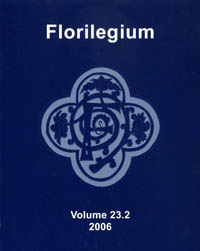Chaucer's Wife of Bath, Hoccleve's Arguing Women, and Lydgate's Hertford Wives: Lay Interpretation and the Figure of the Spinning Woman in Late Medieval England
Résumé
The paper explores the figure of the spinning woman in connection with the growing desire of Church and state forces to control lay religious and interpretive practices in late fourteenth- and early fifteenth-century England. Tracing a history of political, religious, and symbolic currency upon which authors could draw to shape their portraits of the spinning woman as representative of dangerous laic desires, the paper concludes with an analysis of Lydgate's Mumming at Hertford. Lydgate presents a multivalent portrait of the spinning woman that adopts conventional symbolic meanings while simultaneously informing a discourse of critique that was useful, but also unsettling, to both Church and state authorities.Téléchargements
Publié-e
2006-06-06
Comment citer
Hill-Vásquez, H. (2006). Chaucer’s Wife of Bath, Hoccleve’s Arguing Women, and Lydgate’s Hertford Wives: Lay Interpretation and the Figure of the Spinning Woman in Late Medieval England. Florilegium, 23(2), 169–195. Consulté à l’adresse https://journals.lib.unb.ca/index.php/flor/article/view/12553
Numéro
Rubrique
Articles



